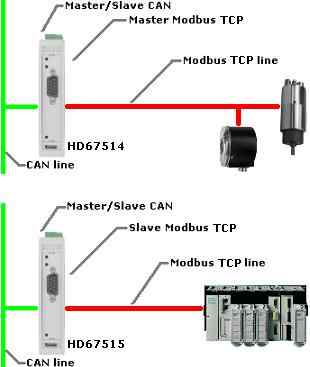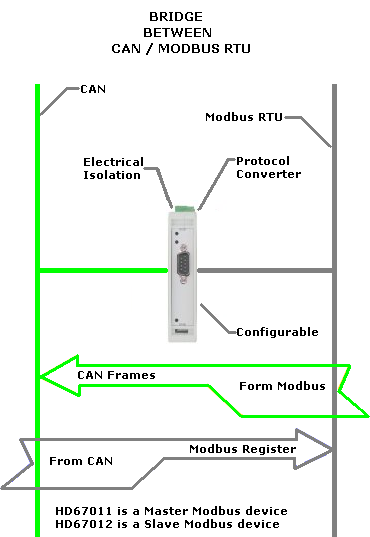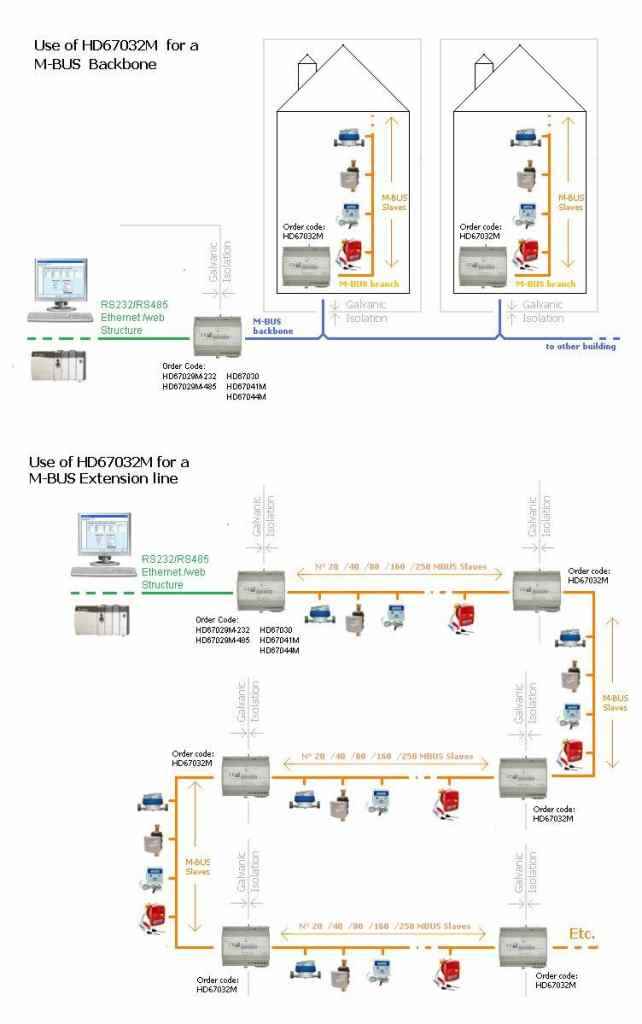Modbus到网关CAN
型号: PXF2437
| 网关 / Bridge CAN from/to Modbus (RTU/ASCII/JBUS/TCP) Master/Slave |
The 网关 CAN from/to Modbus is an electronic device that allows the ex改变 of information between a CAN bus and a Modbus RTU/ASCII/JBUS, over RS232/RS485, bus or between a CAN bus and a Modbus TCP (over Ethernet) bus. For all Modbus there is the possibility for the gateway to be Master or Slave for RTU/ASCII/JBUS versions and Client or Server for TCP versions. 网关s xGate-HD67514 and xGate-HD67514-B2 are Client (i.e. Master) from the TCP side, so they allows the interface between the CAN devices and the Modbus TCP Servers (i.e. Slaves) and vice-versa. 网关s xGate-HD67515 and xGate-HD67515-B2 are Server (i.e. Slave) from the TCP side, so they allows the interface between the CAN devices and the Modbus TCP Clients (i.e. Masters) and vice-versa. 网关 xGate-HD67011 is Master from RTU/ASCII/JBUS side, so it allows the interface between the CAN devices and the Modbus Slaves and vice-versa. 网关 xGate-HD67012 is Slave from RTU/ASCII/JBUS side, so it allows the interface between the CAN devices and the Modbus Master and vice-versa. 网关 xGate-HD67411 is Master from RTU/ASCII/JBUS side, so it allows the interface between the CAN devices and the Modbus Slaves and vice-versa. The main features are two-directional information between networks CAN and Modbus, metal enclosure with four fixing lugs,triple 隔离between CAN - Power supply and between CAN – RS485 and between RS485 – Power supply,varnished and optionally resined, temperature range -40°C to 105°C. 网关 xGate-HD67412 is Slave from RTU/ASCII/JBUS side, so it allows the interface between the CAN devices and the Modbus Master and vice-versa. The main features are two-directional information between networks CAN and Modbus, metal enclosure with four fixing lugs,triple 隔离between CAN - Power supply and between CAN – RS485 and between RS485 – Power supply,varnished and optionally resined, temperature range -40°C to 105°C. Note: for transparent conversions between CAN and Ethernet: << please navigate in the directory in the left side << |
  |
||
 |
 |
|
 |
 |
|
|
|
||||||||||||||||||||||
url: http://www.51lm.cn/p/templates/cn/show.php?cid=905&aid=2437




 Software for easy configurator
Software for easy configurator